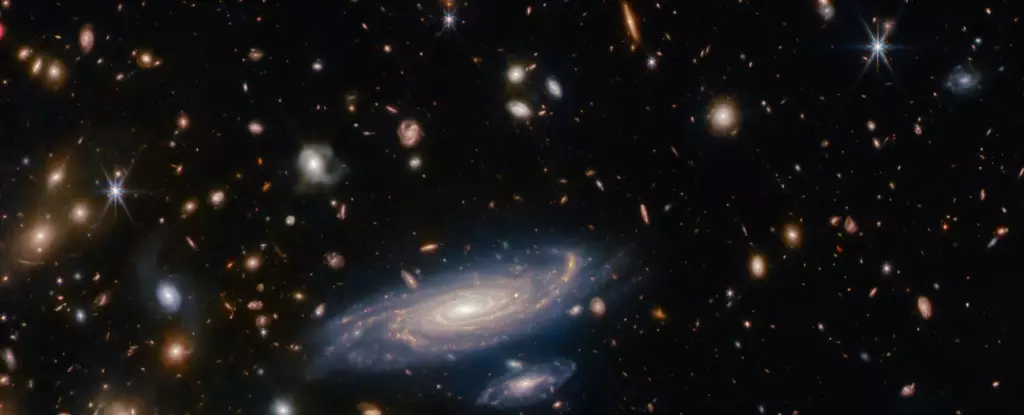The James Webb Space Telescope (JWST) is poised to revolutionize our understanding of the early Universe. With its advanced capabilities, JWST aims to observe the epoch when the first galaxies were formed. Through deep observations, astronomers using the telescope have already made exciting discoveries about the formation, evolution, and composition of these ancient galaxies. In a recent study published in Nature Astronomy, a team of Danish researchers have provided new insights into the earliest stages of galaxy formation using data from the JWST.
The researchers focused their study on 16 galaxies that are among the earliest ever observed. These galaxies are so old that they are likely still in the process of being formed. One significant finding of the study is that the chemical abundances in these galaxies are only one-fourth of the levels seen in later-formed galaxies. This observation suggests that the galaxies at this early stage are still connected with the intergalactic medium and are continuously receiving pristine gas, which dilutes their metal abundances.
The findings of this study challenge the current understanding of galaxy evolution, which assumes that galaxies remain in an equilibrium state throughout most of the Universe’s history. According to the conventional model, the number of stars formed in a galaxy is directly related to the number of heavy elements, such as metals, present in the galaxy. However, the researchers have found that these early galaxies exhibit a different ratio between stars and heavy elements, indicating that they have not yet undergone significant star formation and enrichment of gas clouds with metals.
The results of this study align with theoretical models of galaxy formation, which have long predicted that the earliest galaxies would have lower levels of heavy elements. The observations made with JWST provide empirical evidence for these predictions, confirming that the earliest stages of galaxy formation are indeed intimately connected to the intergalactic medium.
Kasper Elm Heintz, leader of the study, stated that “The result gives us the first insight into the earliest stages of galaxy formation which appear to be more intimately connected with the gas in between the galaxies than we thought.” This groundbreaking discovery opens up new avenues for further exploration and understanding of the processes that shaped the early Universe.
While this study provides valuable insights, the researchers emphasize that it is just the beginning. JWST is expected to generate an abundance of data that will offer a much clearer understanding of galaxy formation and the early structures that emerged in the first billion years after the Big Bang. The telescope’s capabilities and sensitivity will enable astronomers to delve deeper into the mysteries of the early Universe and to unlock its secrets.
The James Webb Space Telescope has already begun to rewrite our understanding of the Universe’s infancy. By observing the earliest galaxies, JWST has revealed that these ancient cosmic entities have significantly lower levels of heavy elements compared to later-formed galaxies. This finding challenges existing models of galaxy evolution, highlighting the intricate relationship between galaxies and the intergalactic medium during their formative stages. As JWST continues to collect data and provide more comprehensive observations, we can look forward to a wealth of new knowledge about the birth and evolution of galaxies in the early Universe.


Leave a Reply